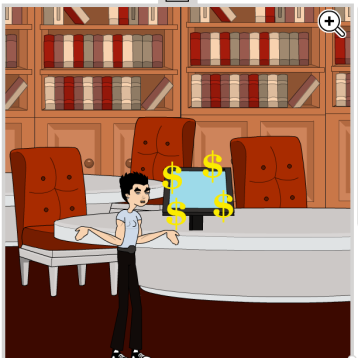
(Credit:Jim, Application:Pixton)
Publication fees are not borne purely by authors, but are shared by the many organisations whose missions depend on the broadest possible dissemination and communication of scientific discoveries (Kennison,2004). This begs the question, “are the materials written by a content producer truly free in the first place?”
(Credit: Piled Higher and Deeper, skip to 5.06-5.14)
Shockey and Eisen mentioned, “the government is already paying for research & subscriptions of the materials as well as the indirect cost for the libraries.” Bailey emphasised, “articles published were substantially funded by government through Open Access (OA) (CW Bailey Jr, 2005),” indicating free, immediate, online availability of research articles coupled with the rights to use these articles fully in the digital environment (SPARC). What would happen if an author does not receive significant funding from the government?
Subsequently, organisations sponsor for the articles generated in OA as well. While investing at least $3 billion to “cure, manage, and prevent all disease by the end of the century,” Facebook CEO funded Chan Zuckerberg Biohub, a $600 million scientific research organisation and enabled the researchers to make their findings open-source (BuzzFeed,2016). Beyond that, National Institutes of Health granted Public Library of Science (PLOS), a non-profit OA publisher, $10-million to undertake a “genome-wide” study, determining whether drugs produce stress in the S.pneumoniae genome (BC News,2016). Considering the amount of funding is enormous, I am of the view that a producer’s contents cannot be free in the long run.
Furthermore, there is a need to declare that tax payers are also involved in funding the materials published. Indians spend close to $2.4 million annually to get their scientific research output published in different open access (OA) journals. Out of the 70% is sourced from taxpayers (Swarajaya,2016). In addition, a $25 billion industry double-dips into taxpayers’ pockets. Much of the research from Elsevier’s journals is supported by federal money from the National Science Foundation and the National Institutes of Health, not mentioning that journals charge taxpayers for the right to see the research they have paid for (Richard Aslin,2016). These evidences illustrate that huge funds are spent on publishing the materials and thus they cannot be considered free.
Above all, many entities, which includes government, organisations, taxpayers and so on, are imperative to make Open Access possible. Otherwise, the materials published will not be sustainable in the long run. (381 words)
References:

